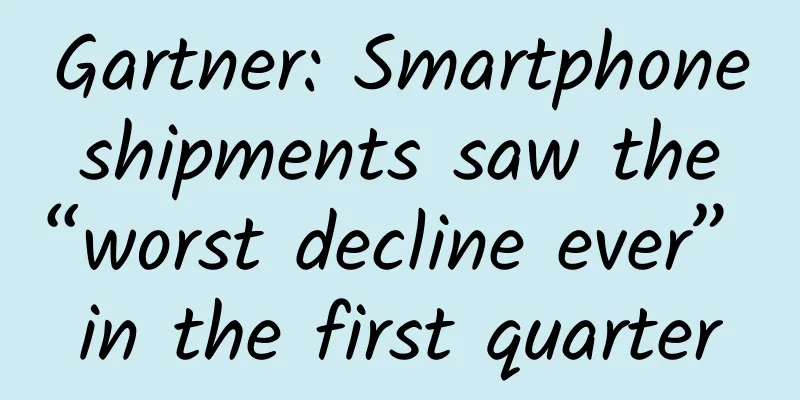How Apple turned Android into a hardware guinea pig!

|
Some people say that in Jobs' vision of changing the world, there is a main axis from iCar, iHouse, iTown to iEarth, and Cook is realizing his legacy from Apple Watch. Apple's hardware iteration has always had two fulcrums: the internal cause is Apple's closed, stable, and efficient iOS system, which is Jobs' precious legacy; the external cause is the Android guinea pigs who are willing to be hardware martyrs one after another, and the latter are helping Apple do what it wants to do but cannot do. Since its birth, the Android system has been under heavy pressure from Apple. Although the free gene and open features have made Android devices flourish everywhere, with a total activation of more than 1 billion, Android's product philosophy has fallen into the misunderstanding of competing with hardware from the beginning because it cannot challenge Apple in terms of user experience. The prevalence of benchmarking tools has also played a role in fueling this. This has brought two serious consequences: first, Android phones with stacked hardware and amazing parameters are far less smooth than Apple phones with lower configurations; second, the threshold of competition continues to drop. The advent of Lenovo Lemon indicates that the main battlefield of mobile phones is shifting from the 1,000 yuan era to the 600 yuan era, which directly leads to the normalization of losses in the Android ecosystem. The slogan "becoming the king of cost-effectiveness among domestic mobile phones" must have been shouted out with tears. At least the ideal of Chinese manufacturing advocating by Wu Xiaobo to bid farewell to "high quality and low price" is still a long way off in the mobile phone industry. Apple only competes on experience, not speed? Apple's attitude towards Android has actually changed subtly. In the Steve Jobs era, Apple hated Android so much that, in the words of the Apple founder, it vowed to "use every last breath" and "spend every last penny" to "fight a nuclear war" to encircle and eliminate those "plagiarized Android products." Jobs said so and did so. However, in the Tim Cook era, Jobs' successor unexpectedly discovered the hidden value of Android: although the open Android can launch hardware products faster than Apple, due to the limitations of its brand value and the immaturity of its user experience, it will not pose a threat to Apple, but will instead play a role similar to that of a guinea pig. The negative feedback caused by these products just helps Apple to correct its technology and design. Whether it is admitted or not, this is becoming a reality. Take iTV as an example. Apple originally had products like Apple Tv, but since 2012, the industry has been rumored that Apple will launch smart TVs, and the details are so rich that you can't help but believe it, such as the size is about 42 to 55 inches, Siri wireless voice control, built-in WiFi and HD camera, support for facial recognition, tens of thousands of Applestore applications, etc. Although there is still no news about iTV so far, it has already triggered a domino effect in the industry. Not only are all kinds of boxes overwhelming, but even smart TVs are constantly appearing. In short, in the strategic opportunity period when heavyweight Apple products have not appeared, all manufacturers are promoting this TV revolution from the perspective of what they think is the most advantageous. Powerful traditional TV manufacturers are busy upgrading their panels. Sharp is playing with its IGZO, and Samsung and LG are also very active in their 4K and curved screens. Small and medium-sized manufacturers and some Internet companies are eager to launch various cutting-edge concept TVs, but there is a huge gap between these products and consumers' expectations. The hardware advantages of the former are not reflected in the system experience and content operation, and they are still products of the Industrial 2.0 era. The latter generally use a deeply customized Android system. In addition to the extremely immature experience of dual-screen interaction, the compatibility and matching of software and hardware are poor, and they cannot integrate content resources as skillfully as Apple. These excessive products can only dig a deep pit to bury themselves. The consumer desires that they have aroused but cannot be satisfied are destined to be filled by Apple. Apple in the Cook era has become more and more proficient in this trick of substituting a dead person for a dead one. Sapphire Games In September 2014, when Apple revealed that the iPhone 6 series would use sapphire screens, it was not only GTAT's stock that was pushed up, but also a number of Android manufacturers' adrenaline surged. Due to the low yield rate, Apple's sapphire phone has not been seen, but within a month, many Android manufacturers' sapphire phones have been unveiled. If the sapphire screen is a touchstone, then it fully verifies the quality of Apple and Android product philosophies. As a screen material, sapphire has obvious advantages and disadvantages. Its Mohs hardness reaches 9, which is almost one of the hardest substances in nature. It can effectively protect the screen, but it is also brittle and easy to break, which will of course have terrible consequences for those iPhone 6 plus that have bent in the trouser pocket. In the end, the iPhone 6 with sapphire screen did not appear, but Apple's voice in this game was fully reflected. First, even if GTAT goes bankrupt, Apple can still find alternative manufacturers because it has enough orders. According to 9to5Mac, the financial support Apple gave to GTAT was enough to enable the latter to mass-produce about 100-200 million iPhone-sized displays per year. The losses caused by GTAT's bankruptcy will naturally be filled by someone. Secondly, even if the sapphire screen is temporarily absent from the iPhone 6, there will be enough orders from other smart devices. For example, Apple watch has a shipment volume of 5 million this year, and it will increase tenfold next year. The marketing attribute of sapphire has a consumption bonus like diamond, which can easily make people think of beautiful words such as luxury, purity, and toughness. Moreover, it doesn't take a very meticulous mind to imagine what kind of butterfly effect the sapphire craze will trigger in the Android camp. Apple has no reason to stop these fanatical imitators, but in the end it can only be a stepping stone. It is blind for Android manufacturers to follow Apple in mass-producing sapphire phones. Due to limited production capacity, they simply cannot reach the break-even point, unless they are luxury phones such as Vertu, Savelli and TAG. The bosses of those Android manufacturers are not stupid enough to forget the basic theory of revenue management. They know that these phones do not have the sales strength to affect the financial report, but they still like the overflowing brand and public relations value. In order to seize limited communication resources, they are willing to be guinea pigs for Apple and willingly experience all the joys and pains brought by sapphire. The saddest thing for the Android camp is that even if they get ahead of Apple, the ending is not happy. For example, in the case of large-screen mobile phones, Steve Jobs was obsessed with the best experience of one-handed operation, which gave some Android manufacturers, led by Samsung, the opportunity to challenge Apple. However, with the launch of iPhone 6 and plus, Apple recovered the dividends it had given away, and the subsequent trade-in policy directly grabbed the lifeblood of Android. The Demonstration Effect of Applewatch The fever of wearable devices started with Google Glass. Android manufacturers are clearly ahead of Apple in innovation in this field. Although the latter has been constantly announcing various news, its actual actions are very cautious. Apple is still concerned about creating a business model of hardware + software + services to maximize profits. Wearable devices are divided into two categories. Bracelets like the Xiaomi Mi Band, which do not have a display and third-party applications, can only be considered basic. Only devices like Pebble or Galaxy Gear can be called smart wearable devices. Unfortunately, most Android manufacturers are only interested in how to launch products faster rather than carefully crafting user experience. This has led to the proliferation of basic wearable devices with low barriers to entry. For example, simple bracelets exploded in 2014. The daily shipments of the Xiaomi Mi Band alone exceeded 100,000, and the annual shipments exceeded one million. However, in fact, the homogeneity of these devices is quite serious. They are nothing more than alarm clocks disguised as sleep management and pedometers disguised as health management. In any case, they cannot support the future of wearable devices. There are still very few smart wearable devices that can run third-party applications. The total shipments in 2014 were only 4.6 million units, of which only 720,000 were equipped with the Android Wear system. The reason why aggressive Android manufacturers are so cautious is that the entire industry is in a loss. It is almost an impossible task to meet consumers' expectations for products while improving software support and providing a better user experience. After the concept of smart watches became popular, almost all manufacturers joined in, making 2015 the first year of smart watches. Moto 360, Huawei watch, and LG Watch are the smart watches that look and feel closest to traditional watches. The designs of Asus Zenwatch and Sony Smartwatch are more eclectic. Pebble Steel is probably the closest to Apple in concept, but all these watches are warm-up works before the appearance of Apple watch, because only Apple has the integration capabilities of industrial design, supply chain and ecological chain to create miracles. The open Android and the closed Apple will continue to compete, but if the vibrant Android is only committed to launching Apple-like products faster than Apple, this will undoubtedly be the birth of another form of Huaqiangbei. |
<<: Please don't let programmers grope in the dark
Recommend
How to promote WeChat Mini Programs? 4 ways to promote and attract traffic to mini programs!
When WeChat mini programs were first launched, th...
By losing two tactics, NetQin has made a further strategic progress
Recently, Cheetah CEO Fu Sheng's article &quo...
Apple releases iOS 13.3 / iPadOS 13.3 official version update
This morning, Apple released the official version...
How to create a Douyin IP expert and share the tips on how to gain fans!
Everyone is familiar with the word "Tik Tok&...
Fast, accurate, and clear! This "video recorder" can record atoms and molecules!
Author: Luo Huiqian, Researcher, Institute of Phy...
Android external file encryption and decryption and application practice
There is such an application scenario. When we pu...
From tactics to strategy, 7 ways to get early seed users for App promotion
All startups will face the problem of how to acqu...
Xiaomi search ads financial industry keyword optimization tips!
I add words to my account every day, why isn’t th...
Amazon's entry into Tmall will affect overseas shopping landscape
Last night, during the Lantern Festival, Amazon C...
In fact, there is no cold medicine in the world that can "cure colds"
There is actually no cure for a cold...because ev...
Google Chrome for Android gets two-factor authentication
[[415122]] In order to reduce the risk of Interne...
4 issues that determine the success or failure of Google Play in China
[[154198]] Google's return to China has taken...
Li Niuniu-Live Selling Practical Course
Li Niuniu - Live Streaming Sales Course Resource I...
Liu Hong is appointed FF’s Global Chief Administrative Officer, Global Executive Vice President, and Global General Counsel
On August 1, Faraday Future (FF) announced that L...
Practical Tips | 360oCPC product interpretation and optimization methods
In advertising, high conversion costs, small conv...









